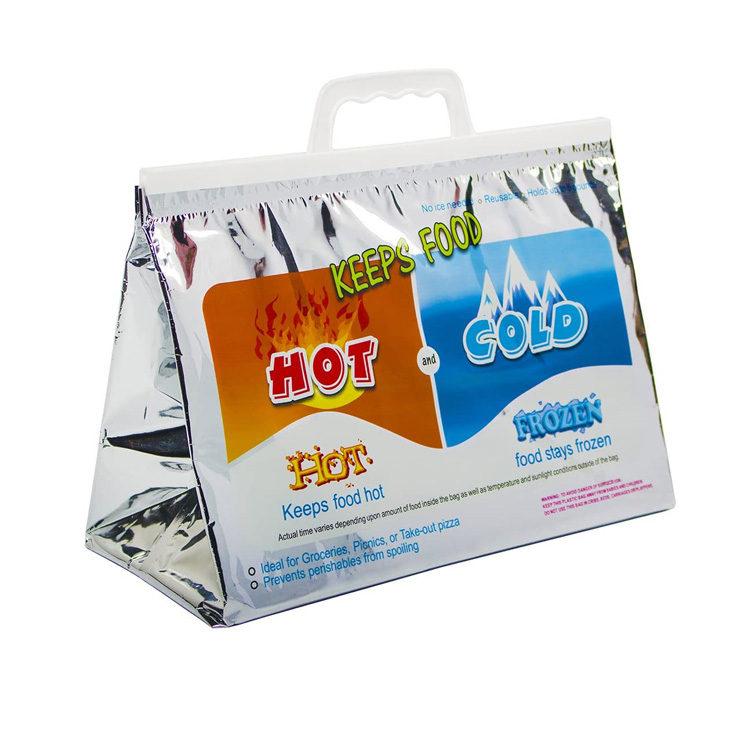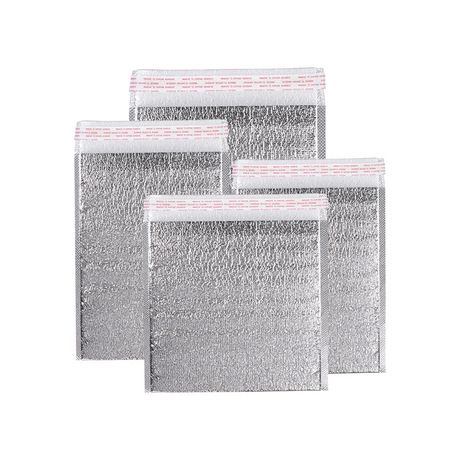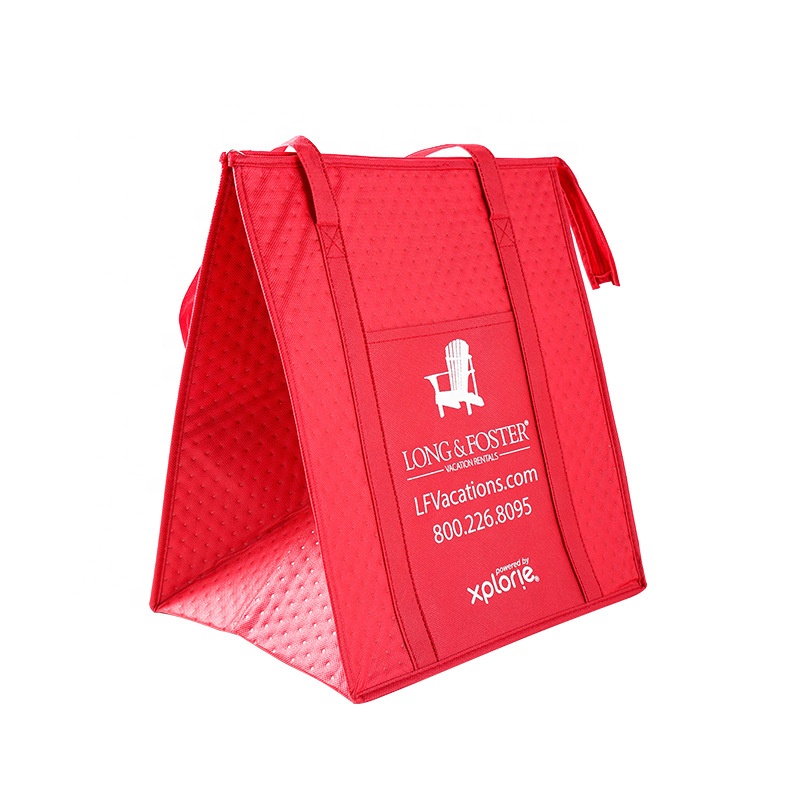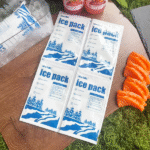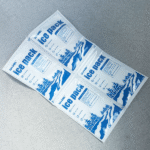When shipping temperature-sensitive products, choosing between dry ice and ice packs can be a crucial decision. While both options help maintain a consistent temperature during transit, they serve different purposes. This guide explains the differences between dry ice and ice packs, and when to use each for optimal results.

This Article Will Answer:
-
What is the difference between dry ice and ice packs?
-
When should you use dry ice vs ice packs for shipping?
-
What are the pros and cons of dry ice and ice packs?
-
Which option is more cost-effective for temperature-sensitive shipments?
What is the Difference Between Dry Ice and Ice Packs?
Dry ice is solid carbon dioxide (CO2), while ice packs are typically made from water or gel-based substances that freeze at a lower temperature. Dry ice maintains a colder temperature for longer periods, making it ideal for items that require subzero storage. Ice packs, on the other hand, offer a more manageable temperature range and are often used for less sensitive products.
Dry ice sublimes directly from a solid to a gas, releasing CO2, which requires proper ventilation. Ice packs are reusable and can be frozen and used again, offering a more environmentally friendly solution for smaller-scale shipments.
Dry Ice vs Ice Pack Comparison
| Feature | Dry Ice | Ice Pack |
|---|---|---|
| Temperature Range | -78.5°C (-109.3°F) | 0–5°C (32–41°F) |
| Duration | Lasts longer, ideal for extended shipments | Shorter duration, needs replacement |
| Use | Ideal for subzero temperature requirements | Suitable for refrigeration needs |
| Regulations | Considered hazardous material | No special regulations |
When Should You Use Dry Ice vs Ice Packs for Shipping?
Dry ice is best used for shipments that need temperatures below freezing, such as pharmaceuticals, biological samples, or certain perishable foods. If the product requires ultra-low temperatures to stay safe, dry ice is the go-to option. However, dry ice requires specialized packaging and labeling, as well as ventilation for the CO2 gas released during sublimation.
Ice packs are better suited for products that need to be kept cool but not frozen. These are ideal for products like fresh fruits, dairy products, or beverages that only require refrigeration. Ice packs are easier to handle and do not require hazardous material labeling.
Best Uses for Dry Ice and Ice Packs
| Item Type | Best Shipping Method | Reason |
|---|---|---|
| Pharmaceuticals | Dry Ice | Requires subzero temperatures |
| Fresh Produce | Ice Packs | Needs refrigeration, not freezing |
| Frozen Foods | Dry Ice | Needs to stay below freezing |
| Dairy & Beverages | Ice Packs | Best for refrigeration, not freezing |
What Are the Pros and Cons of Dry Ice and Ice Packs?
Each solution has its own advantages and disadvantages, depending on the needs of the shipment.
Dry Ice Pros:
-
Can maintain much colder temperatures than ice packs.
-
Ideal for long transit times and temperature-sensitive items that need subzero conditions.
Dry Ice Cons:
-
More expensive than ice packs.
-
Requires careful handling due to its hazardous classification and the need for proper ventilation.
Ice Packs Pros:
-
Reusable, cost-effective, and easy to handle.
-
No special regulations or shipping fees are required.
Ice Packs Cons:
-
Doesn’t provide the ultra-low temperatures that dry ice does.
-
Needs to be replaced more frequently during longer shipments.
Pros and Cons Summary
| Product | Pros | Cons |
|---|---|---|
| Dry Ice | Lasts longer, colder temperatures, ideal for sensitive items | Expensive, hazardous material, requires special handling |
| Ice Pack | Cost-effective, reusable, easy to handle | Limited temperature range, needs replacing for long shipments |
Which Option is More Cost-Effective for Temperature-Sensitive Shipments?
Ice packs are generally more affordable than dry ice, especially for short to medium-distance shipments or items that do not need subzero temperatures. While dry ice offers superior cold retention, the added costs of packaging, labeling, and shipping hazardous materials can make it a more expensive choice.
For businesses shipping smaller, less temperature-sensitive items, ice packs are often the more budget-friendly option. However, for long-distance shipments or extremely temperature-sensitive products, dry ice may prove more efficient in maintaining product integrity.
2025 Trends in Dry Ice and Ice Pack Shipping
In 2025, the trend toward sustainable shipping practices has influenced the development of more eco-friendly ice packs. Companies are now investing in biodegradable ice packs that can be used multiple times, reducing the overall environmental footprint of shipping.
Additionally, smart temperature-monitoring solutions are becoming increasingly popular for both dry ice and ice pack shipments. These technologies allow for real-time tracking and adjustments to ensure products stay at their optimal temperature.
Latest Trends in Dry Ice and Ice Pack Shipping
-
Eco-Friendly Ice Packs: Biodegradable materials are now being used in ice pack production.
-
Temperature Monitoring: Smart sensors for real-time temperature monitoring during shipments.
-
Recyclable Dry Ice Packaging: Innovative packaging solutions that minimize waste and carbon footprint.
Market Insight: The demand for sustainable and smarter cold chain solutions is expected to rise by 12% annually in the next few years as businesses strive to reduce their environmental impact.
FAQ {#faq}
Can I use ice packs instead of dry ice for temperature-sensitive shipments?
Yes, ice packs are a great alternative for products that only need refrigeration but do not require freezing temperatures. They are more cost-effective and easier to handle.
Is dry ice better than ice packs for long shipments?
Yes, dry ice is more effective for longer shipments, especially for products that need to stay frozen. It lasts longer than ice packs and doesn’t need frequent replacement.
How do I pack dry ice safely for shipment?
When packing dry ice, ensure you use insulated containers with proper ventilation. Label the package with the UN1845 label and include all required shipping documentation.
Summary & Recommendations
Dry ice and ice packs are both essential tools for cold chain shipping, but the choice depends on the temperature requirements of your product. Dry ice is best for ultra-cold shipments, while ice packs are a cost-effective solution for items requiring just refrigeration. Always consider the duration of transit and the regulatory requirements when making your choice.
Next Steps:
-
Determine the temperature requirements of your product.
-
Choose between dry ice or ice packs based on those needs.
-
Consult with a shipping expert for the best cold chain solutions.
About Tempk
At Tempk, we specialize in providing advanced cold chain solutions, including dry ice and ice pack packaging. Our innovative technologies ensure that your temperature-sensitive shipments reach their destination in perfect condition.
Need a cold chain solution for your business? Contact us today for personalized advice.









